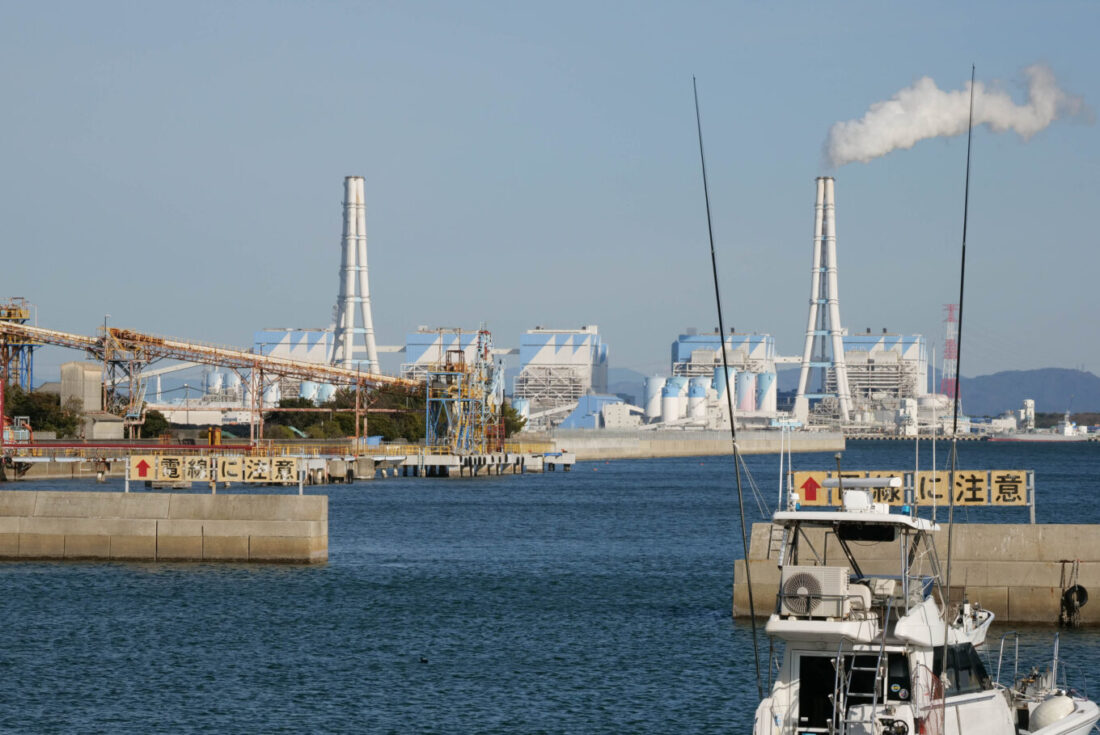Aichi Prefecture has the second-largest greenhouse gas (GHG) emissions of all prefectures in Japan.
A total of 11 coal-fired power plants (5,756 MW installed capacity) are in operation, including three large-scale coal plants: JERA’s Hekinan Thermal Power Station, JERA’s Taketoyo Thermal Power Station, and Nakayama Nagoya Kyodo Hatsuden’s Nagoya Power Plant, clustered in Kinuura Bay on the east side of the Chita Peninsula.
Hekinan Thermal Power Station, operated by JERA (Japan’s largest power company, established by TEPCO Fuel & Power Incorporated and Chubu Electric Power Company) is the largest-emitting power plant in Japan, with five units, a total installed capacity of 4,100 MW* and annual CO2 emissions of 22.94 million tons (in FY2021). JERA began a demonstration of co-firing 20% of ammonia with coal in Hekinan Unit 4 in April 2024, the world’s first trial at a major commercial plant using 20% of ammonia. However, it has been pointed out that, once the whole life cycle of fuel ammonia is considered, co-firing ammonia does not meaningfully reduce emissions, and only extends the life of coal-fired power generation.
JERA’s Taketoyo Unit 5 located in a residential area, began commercial operation in 2022 and co-fires coal with biomass fuel. Its installed capacity is 1,070 MW, among the largest in Japan in terms of single-unit output. After a major explosion in January caused by biomass dust, the power plant has been out of operation (as of June 2024). Even though the plant’s operation has been suspended,the power supply in the area remains sufficient, and the need to restart operation in the future is being questioned.
To address these issues related to coal-fired power and climate change in Aichi Prefecture, citizens launched the group “Cool Climate Aichi” at the end of 2023. The group holds study sessions and lobbies local governments.

